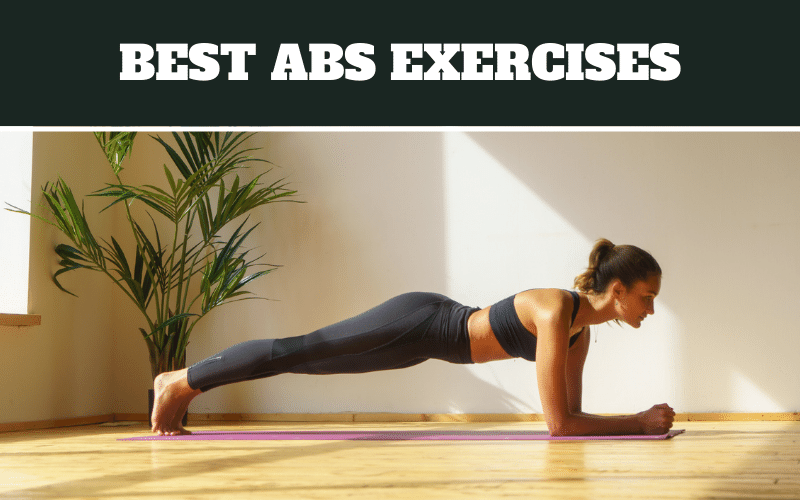A strong and stable core is essential for generating power, maintaining balance, and executing a controlled golf swing. Here are some of the best core exercises that can help golfers improve their game:
1. Plank Variations:
– Standard Plank: Get into a push-up position with your weight on your forearms and toes. Keep your body in a straight line from head to heels.
– Side Plank: Lie on your side, propped up on your forearm, and lift your hips to create a straight line from head to feet.
– Plank with Hip Dips: From the standard plank position, gently rotate your hips from side to side while maintaining a straight body.
2. Russian Twists:
Sit on the ground with your knees bent, holding a weight or a medicine ball. Lean back slightly, lift your feet off the ground, and twist your torso to touch the weight to the ground on each side.
3. Medicine Ball Rotational Throws:
Hold a medicine ball and rotate your torso as you swing the ball from one side to the other, engaging your core muscles.
4. Bicycle Crunches:
Lie on your back and alternate bringing your opposite elbow to your opposite knee while extending the other leg.
5. Dead Bug Exercise:
Lie on your back with your arms and legs extended toward the ceiling. Lower one arm and the opposite leg towards the ground while maintaining contact between your lower back and the floor.
6. Hanging Leg Raises:
If you have access to a pull-up bar, hang from it and raise your legs up towards your chest, engaging your lower abdominal muscles.
7. TRX or Suspension Trainer Exercises:
Utilize a TRX or suspension trainer for exercises like knee tucks, pikes, and plank variations. These exercises engage your core muscles while adding an element of instability.
8. Bird Dogs:
Get on your hands and knees, then extend one arm forward and the opposite leg back while keeping your core engaged. Alternate sides.
9. Woodchoppers:
Use a cable machine or resistance band to mimic the motion of chopping wood, rotating your torso as you pull the handle down diagonally.
10. Bridge Variations:
– Bridge: Lie on your back with your knees bent, lift your hips off the ground, and hold the position, engaging your glutes and core.
– Single-Leg Bridge: Perform a bridge exercise while extending one leg straight out in front of you.
Consistency is key when it comes to strengthening your core for golf. Aim to incorporate these exercises into your regular workout routine and focus on proper form and control.
Remember that a strong core not only enhances your golf performance but also contributes to overall stability and functional fitness. If you’re new to these exercises or have any pre-existing conditions, consider consulting a fitness professional before beginning a new workout routine.
What Role Do Core Muscles Play in the Golf Swing?
The core muscles play a crucial role in generating power, stability, and proper sequencing during the golf swing. The golf swing is a complex movement that involves the coordinated action of various muscle groups, and the core is at the center of this motion.
Here’s how the core muscles are used in different phases of the golf swing:
Backswing:
– The core muscles help initiate the backswing by rotating the upper body away from the target.
– The obliques (side abdominal muscles) and the deeper muscles of the core provide the rotational force necessary to coil the upper body against the resistance of the lower body.
Transition and Downswing:
– The core muscles are engaged to initiate the downswing by unwinding the upper body from the coiled backswing position.
– The rapid rotation of the hips and torso generates torque and energy that is transferred through the arms and into the golf club.
Impact and Follow-Through:
– At impact, the core muscles stabilize the body and transfer the energy generated from the ground up through the hips, torso, and arms to the clubhead.
– The core muscles help maintain the spine angle, preventing early extension and maintaining proper posture through the impact zone.
– The rotation of the core helps square the clubface to the target at impact, leading to accurate shots.
Finish:
– The follow-through involves a continuation of the core rotation as the golfer releases the energy generated during the swing.
– The core muscles decelerate the body’s rotation, bringing the body to a balanced and controlled finish position.
Importance of Core Strength for Golf
Power Generation:
A strong core allows you to generate rotational power, which is essential for clubhead speed and distance.
Balance and Stability:
Core muscles provide stability and balance, ensuring that you maintain control throughout the swing.
Consistency:
A stable core promotes a consistent swing plane and helps prevent swaying or sliding during the swing.
Injury Prevention:
A strong core helps protect your lower back and other vulnerable areas from strain during the forceful motion of the swing.
Separation:
Core strength allows for effective separation between the hips and shoulders, creating the potential for more power.
To train your core for golf, focus on exercises that enhance rotational strength, stability, and flexibility. Incorporate a variety of movements that target different core muscles, including the rectus abdominis, obliques, transverse abdominis, and lower back muscles.
By developing a strong and functional core, you can optimize your golf swing mechanics and enhance your performance on the course.

